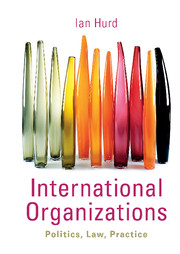Book contents
- Frontmatter
- Contents
- Preface
- Acknowledgement
- 1 Introduction to international organizations
- 2 A guide to the study of international organizations
- 3 The World Trade Organization
- 4 The International Monetary Fund and the World Bank
- 5 The United Nations I
- 6 The United Nations II
- 7 The International Labor Organization
- 8 The International Court of Justice
- 9 The International Criminal Court
- 10 Regional Organizations
- 11 Conclusion
- Index
10 - Regional Organizations
EU, AU, and ASEAN
- Frontmatter
- Contents
- Preface
- Acknowledgement
- 1 Introduction to international organizations
- 2 A guide to the study of international organizations
- 3 The World Trade Organization
- 4 The International Monetary Fund and the World Bank
- 5 The United Nations I
- 6 The United Nations II
- 7 The International Labor Organization
- 8 The International Court of Justice
- 9 The International Criminal Court
- 10 Regional Organizations
- 11 Conclusion
- Index
Summary
The distinctive features of regional organizations arise from the fact that while they strive to integrate a smaller set of countries they reach across a wider range of substantive issues than the other international organizations in this book. The regional organizations in this chapter are vastly different from each other but they face the same challenge of integrating members on an almost limitless range of policies. They deal with this challenge very differently: the EU has created powerful central authorities, including a bureaucracy and a legal hierarchy between the center and the member states; by contrast, the AU and ASEAN leave most powers of decision in the hands of meetings of their heads of government, so that these two organizations could in theory make forceful collective decisions but in practice they are forums for negotiation more than coherent actors.
Despite all the breadth and diversity of the global organizations discussed in the previous chapters, many of the most interesting developments in international coordination are taking place in regional groups where local challenges, local politics, and local ambitions create a very different set of incentives and limits. This chapter examines three of these regional organizations and uses the differences between them to highlight the broader themes of international organization. The Association of Southeast Asian Nations (ASEAN) has all the institutional architecture of a formal international organization but is virtually empty of actorly properties, and its influence comes when it is pressed into service as a legitimating device for the interests of its strongest members.
- Type
- Chapter
- Information
- International OrganizationsPolitics, Law, Practice, pp. 245 - 266Publisher: Cambridge University PressPrint publication year: 2010

